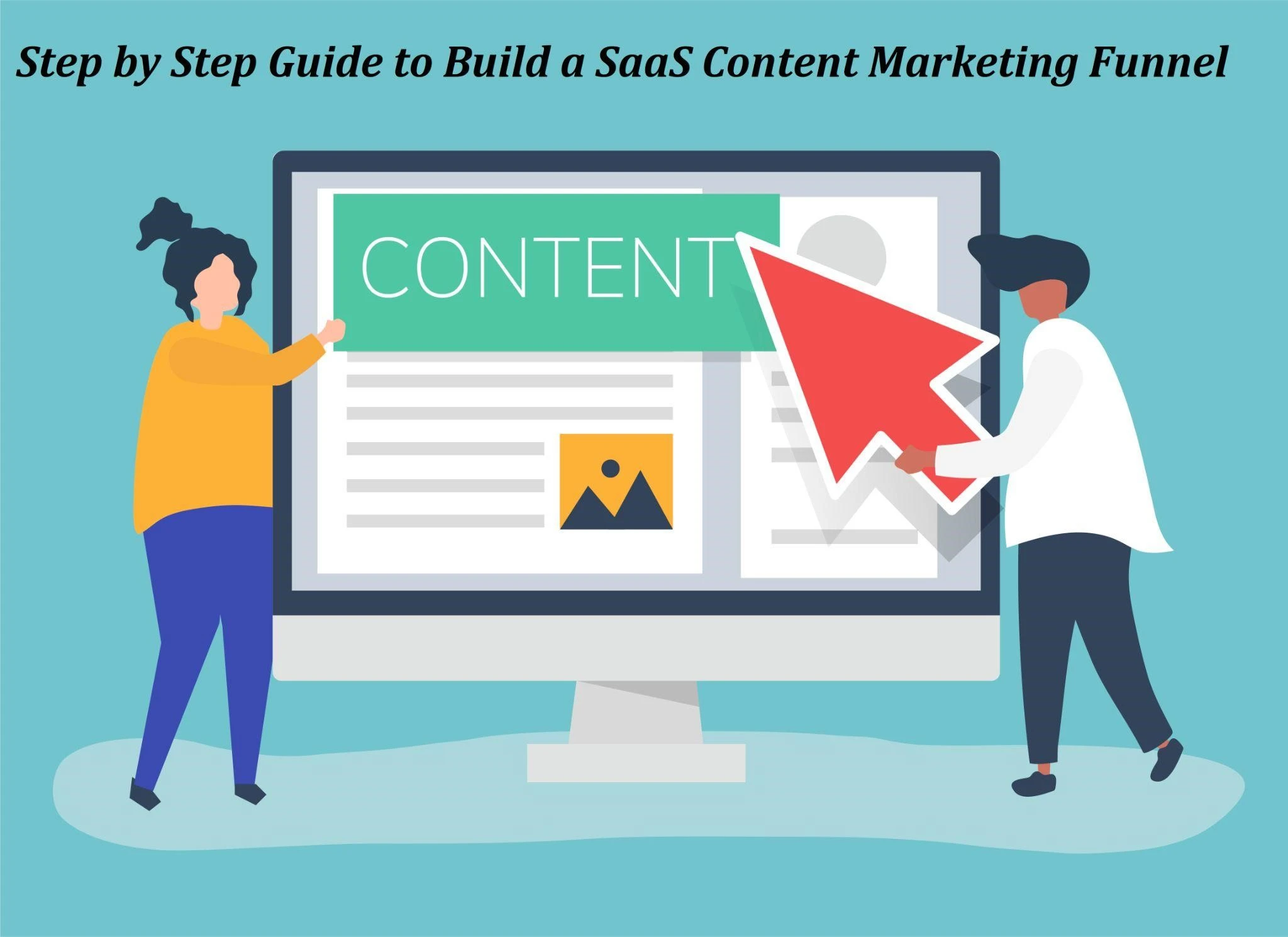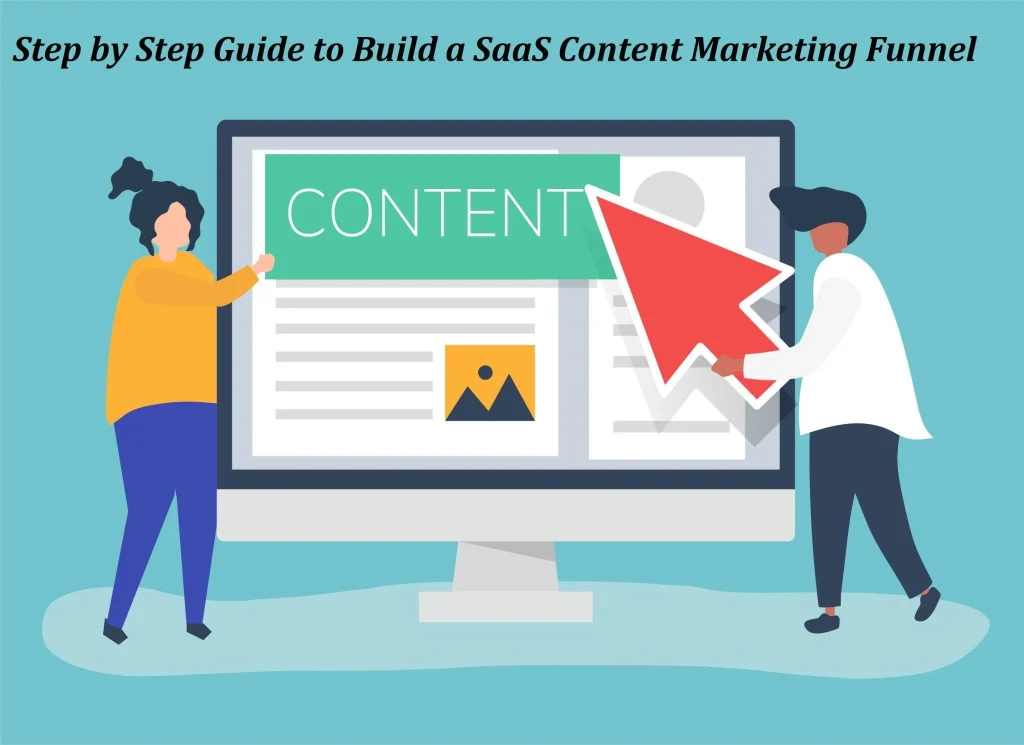Brand differentiation is a key element in a SaaS environment with high competitiveness. An effective strategy is influencing the content marketing funnel through the right tactics. The funnel is an effective tool for raising brand awareness and channeling customers in various stages of the buying process. It eventually results in higher conversions and customer loyalty. Let’s see the guide to build a SaaS content marketing Funnel.
What is a Content Marketing Funnel?
An outline of content marketing’s funnel describes a customer’s journey from discovering your product to making a buying decision and more. It looks to lure, involve, and convert prospects using treatment-specific content at each phase of their decision-making.
Various aspects are involved in designing a content marketing funnel, from choosing your target audience to engaging customers to gain desired results. Overall, the results depend on how much appealing & engaging experience you can offer to the audience. So, get started on building a Potential SaaS Content Marketing Funnel!
Also Read
Guide to Build a SaaS Content Marketing Funnel
Step 1: Identify Your Target Group
Before generating content, it’s necessary to determine who your customers are. Implement marketing research in various channels to gain knowledge about your target audience, e.g., their demographics, challenges, needs, and behavior patterns. Methods such as questionnaires, questionnaires, and analytical programs can give a wide view of audiences.
Step 2: Develop Your Content Strategy
With the funnel’s stages and your target audience in mind, tailor a content strategy to answer their needs and touch on their varied interests up to the point when a sale is complete.
- Awareness Stage Content: Focus first on educational materials, such as blog posts, infographics and videos, that are meant to solve or introduce general challenges of the industry or introduce innovation in the sector. Generally speaking, SEO stands for Search Engine Optimization, which is one of the keys to gaining high search results.
- Consideration Stage Content: Creating comparison charts, case studies and webinars that show how your product is useful with specific examples of their benefits when matched with customers’ needs is vital here.
- Conversion Stage Content: To persuade the leads, introduce a free trial period, give demonstrations, include detailed user testimonials, and offer special deals that will make the decision even easier.
- Retention Stage Content: In addition to this, have advanced pro.s, .ch., and community access for loyal and active users.
Step 3: Set the clear Objectives
Each stage of your content marketing funnel needs to have its aim and this goal goes in line with your business objectives. Typical objectives include:
- Awareness: The primary aim of the campaign is to spread awareness about the brand and teach the market about your product.
- Consideration: Help potential clients find the best fit for what they need.
- Conversion: Get the users to think that your product is what they need
- Retention: Keep customers glued and happy by providing them with something after the purchase.
Step 4: Choose the proper channels for reaching out to your target demographic.
The same as the quality of your content; the choice the channels through which to distribute your content is no less important. The purpose of the channels in each of the media mixes Is to place the target audience where they most often spend their time. For example:
- Social Media Platforms: For B2B marketing, utilize LinkedIn while Instagram and Facebook maintain engagement among B2C audiences.
- Email Marketing: Use personal consistent services specifically sending content to prospects, who have shown interest.
- Blogs and SEO: Capture traffic through the use of strategic keywords to rank.
- Paid Advertising: The outreach during these stages especially during the product launch or promotion becomes vital.
Step 5: Employ and integrate Technological means
The proper selection of technical tools to operate a CMS, CRM tools and analytics software is imperative to simplify content production and distribution, and its monitoring. Automation resources, like HubSpot or Salesforce, can be deployed to take the pressure off sales personnel in the funnel and speed up the process.
Step 6: Develop and send out Messaging Tools
Once the strategy is settled, start uploading the content. Check each article on whether it is of high quality, informative, and also it corresponds to the stage-specific objectives of your funnel. Once the content has been readied, channels through which it is disseminated must be selected. This should be done by keeping a close eye on performance and user engagement.
Step 7: Measure and Increase the Efficiency.
Measure up your level via analytics which will indicate how content performs on each part of the funnel. Parameters of performance may include visitations of sites, leads yield rate, and metrics of involvement which are the indices of the conversion. Crunch those numbers to be sure you found the perfect advice and hinted at possible areas for improvement. Optimization in the context of continuous updates is pivotal for the business to maintain adjusting to the changing market situations and audience preferences.
Step 8: Nurture participation through involvement.
Engaging shoppers shouldn’t stop when the point of purchase gets made. Carry on engaging the customers by sending out customized emails, establishing community platforms, and giving regular news on new products and deals. This is useful for remembering. It also can be your loyal clients become your fans or even brand advocates.
Also Read : SaaS Product Development Guide
Conclusion
Developing a canny SaaS content marketing funnel encompasses a sequential process of obtaining information, elaborating, and standardizing. By learning your audience, writing suitable messages for all the stages in their buying journey, and using social media together with appropriate technology, you will be able to increase the number of times your customers buy from you and thus raise your brand’s awareness.
Also, do not forget that the very essence of a winning funnel is not only to attract leads but also, to mold them to high-value customers and advocators of your brand. So plan your content marketing strategy that is appealing to the users and accordingly build the SaaS Content marketing funnel.





